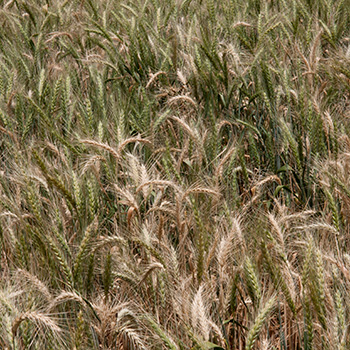Integrated management of Fusarium crown rot in the northern and southern regions
Investment
GRDC Code: DPI2207-004RTX
Integrated management of Fusarium crown rot in the northern and southern regions
Fusarium crown rot is a soil-borne disease that poses a major threat to winter cereals, particularly wheat. Despite causing yield losses of up to 80 per cent, its significance is often overlooked by growers in certain regions. The disease is especially difficult to detect in Mediterranean climates, where 'softer' finishes to the season mask its symptoms.
Currently, there are no in-crop management options available, so minimising disease impact relies on crop sequencing, sowing configuration, variety selection, and managing water dynamics. However, these strategies have not been fully effective in reducing Fusarium crown rot's impact on profitability. Recent research has revealed that Fusarium crown rot can proliferate in the stubble phase of the cereal life cycle, further highlighting the need for a comprehensive understanding of the disease.
This project aims to raise awareness and understanding of Fusarium crown rot as a significant threat to winter cereal production, and to validate effective management strategies to minimise its impact on yield.
- Project start date:
- 01/07/2022
- Project end date:
- 30/06/2025
- Crop type:
-
- Wheat, (Cereal)
- Barley, (Cereal)
- Organisation
- [NSW] Department of Primary Industries and Regional Development
- Region:
- North, South
- Project status
-
Active
GRDC News
Throwing the kitchen sink at Fusarium crown...
19 Oct 2023
A strategy that encompasses genetics, breeding, agronomic management and seed treatment technologies is being used...
Past seasons point to potential cereal pathogen...
11 Jul 2023
With inoculum levels high and conditions ripe, being prepared for Fusarium crown rot and head...
Update papers
- 25 Feb 2025, Increased wheat plant population: the interaction with variety Fusarium crown rot and nitrogen 2025 - GRDC
- 12 Aug 2024, Fusarium crown rot in central and southern cropping systems: it’s all a numbers game - GRDC
- 04 Mar 2024, Strategies for managing fusarium crown rot: new data from northern NSW and southern Qld in 2023 - GRDC
- 29 Feb 2024, A foe in the fallow: what happens with Fusarium crown rot between seasons? - GRDC
- 28 Feb 2024, Increased wheat plant population: the interaction with variety, Fusarium crown rot and nitrogen - GRDC
- 27 Feb 2024, Strategies for managing fusarium crown rot: new data from central NSW in 2023 - GRDC
- 13 Feb 2024, Fusarium crown rot in central and northern cropping systems: it’s all a numbers game - GRDC
- 13 Feb 2024, Implications of sowing Fusarium infected wheat seed in 2023 - GRDC
- 18 Jul 2023, Cereal disease management in 2023: what does a return to a ‘normal’ spring mean? - GRDC
- 27 Feb 2023, Fusarium head blight and white grain issues in 2022 wheat and durum crops - GRDC
- 21 Feb 2023, 2023: A TESTING year for cereal disease management! - GRDC
- 13 Feb 2023, Cereal diseases - an autopsy of 2022 and management considerations for the 2023 season - GRDC
Resources

Paddock Practices: Alert to manage Fusarium crown rot across Riverine Plains - GRDC
03 Apr 2024
Paddocks being sown to a cereal this year with a history of tight cereal rotations and/or grass weeds may be at risk of Fusarium crown rot.
